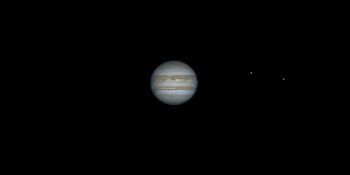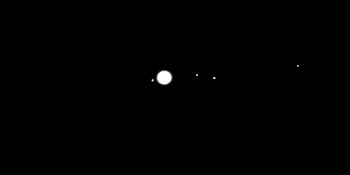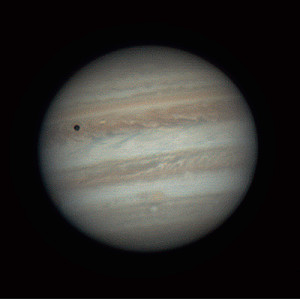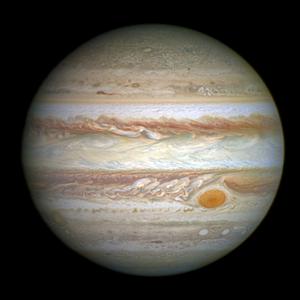Glossary term: Planetas exteriores
Description: En nuestro Sistema Solar, los planetas exteriores son Júpiter, Saturno, Urano y Neptuno. Sus órbitas se encuentran fuera del cinturón de asteroides y todos ellos son planetas gigantes, con una atmósfera muy densa compuesta principalmente de hidrógeno. Esto los diferencia físicamente de los planetas interiores, cada uno de los cuales es un cuerpo rocoso comparativamente pequeño con una atmósfera comparativamente fina.
Los planetas que orbitan estrellas distintas del Sol no se dividen necesariamente en grupos interiores y exteriores de características similares: conocemos varias estrellas con al menos un gigante gaseoso, un "Júpiter caliente", en una órbita cercana.
Related Terms:
See this term in other languages
Term and definition status: The original definition of this term in English have been approved by a research astronomer and a teacher The translation of this term and its definition is still awaiting approval
The OAE Multilingual Glossary is a project of the IAU Office of Astronomy for Education (OAE) in collaboration with the IAU Office of Astronomy Outreach (OAO). The terms and definitions were chosen, written and reviewed by a collective effort from the OAE, the OAE Centers and Nodes, the OAE National Astronomy Education Coordinators (NAECs) and other volunteers. You can find a full list of credits here. All glossary terms and their definitions are released under a Creative Commons CC BY-4.0 license and should be credited to "IAU OAE".
If you notice a factual or translation error in this glossary term or definition then please get in touch.
Related Media
Jupiter's Rotation, by Vishal Sharma, India
Credit: Vishal Sharma/IAU OAE
License: CC-BY-4.0 Creative Commons Reconocimiento 4.0 Internacional (CC BY 4.0) icons
Jupiter Moons Movie2, by Nicolas Hurez, Paul-Antoine Matrangolo, and Carl Pennypacker, United States of America
Credit: Nicolas Hurez, Paul-Antoine Matrangolo and Carl Pennypacker/IAU OAE
License: CC-BY-4.0 Creative Commons Reconocimiento 4.0 Internacional (CC BY 4.0) icons
Jupiter, Io and its shadow, by Ralf Burkart, Germany
Credit: Ralf Burkart/IAU OAE
License: CC-BY-4.0 Creative Commons Reconocimiento 4.0 Internacional (CC BY 4.0) icons
Jupiter
Credit: NASA, ESA, and A. Simon (Goddard Space Flight Center) credit link
License: CC-BY-4.0 Creative Commons Reconocimiento 4.0 Internacional (CC BY 4.0) icons
Saturn
Credit: NASA, ESA, A. Simon (Goddard Space Flight Center), and M.H. Wong (University of California, Berkeley) credit link
License: CC-BY-4.0 Creative Commons Reconocimiento 4.0 Internacional (CC BY 4.0) icons













